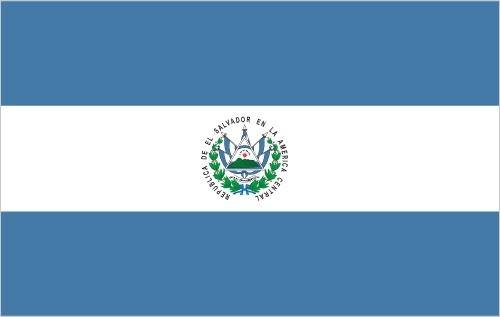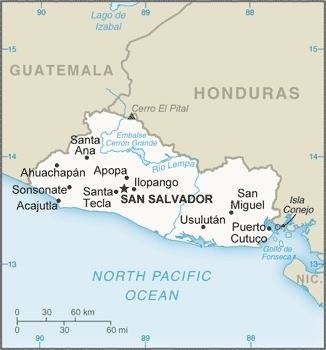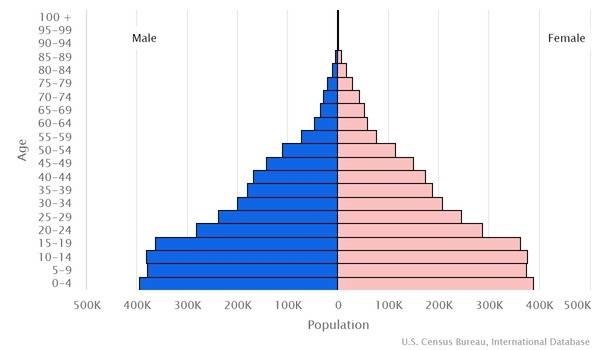Country Summary




Introduction
Background
El Salvador achieved independence from Spain in 1821 and from the Central American Federation in 1839. A 12-year civil war was brought to a close in 1992 when the government and leftist rebels signed a treaty that provided for military and political reforms.
Geography
Area
total: 21,041 sq km
land: 20,721 sq km
water: 320 sq km
Climate
tropical; rainy season (May to October); dry season (November to April); tropical on coast; temperate in uplands
Natural resources
hydropower, geothermal power, petroleum, arable land
People and Society
Population
6,568,745 (2022 est.)
Ethnic groups
Mestizo 86.3%, White 12.7%, Amerindian 0.2% (includes Lenca, Kakawira, Nahua-Pipil), Black 0.1%, other 0.6% (2007 est.)
Languages
Spanish (official), Nawat (among some Amerindians)
Religions
Roman Catholic 50%, Protestant 36%, other 2%, none 12% (2014 est.)
Population growth rate
0.57% (2022 est.)
Government
Government type
presidential republic
Capital
name: San Salvador
Executive branch
chief of state: President Nayib Armando BUKELE Ortez (since 1 June 2019); Vice President Felix Augusto Antonio ULLOA Garay (since 1 June 2019); note - the president is both chief of state and head of government
head of government: President Nayib Armando BUKELE Ortez (since 1 June 2019); Vice President Felix Augusto Antonio ULLOA Garay (since 1 June 2019)
Legislative branch
description: unicameral Legislative Assembly or Asamblea Legislativa (84 seats; members directly elected in multi-seat constituencies and a single nationwide constituency by proportional representation vote to serve 3-year terms)
Economy
Economic overview
growth-challenged Central American economy buttressed via remittances; dense labor force; fairly aggressive COVID-19 stimulus plan; new and lower banking reserve requirements; earthquake, tropical storm, and crime disruptions; widespread corruption
Real GDP (purchasing power parity)
$52.26 billion (2020 est.)
Real GDP per capita
$8,100 (2020 est.)
Agricultural products
sugar cane, maize, milk, poultry, sorghum, beans, coconuts, eggs, apples, oranges
Industries
food processing, beverages, petroleum, chemicals, fertilizer, textiles, furniture, light metals
Exports
$6.29 billion (2020 est.)
Exports - partners
United States 40%, Guatemala 15%, Honduras 15%, Nicaragua 6% (2019)
Exports - commodities
textiles and apparel, electrical capacitors, plastic lids, raw sugar, toilet paper (2019)
Imports
$10.82 billion (2020 est.)
Imports - partners
United States 30%, China 14%, Guatemala 13%, Mexico 8%, Honduras 6% (2019)
Imports - commodities
refined petroleum, packaged medicines, clothing, broadcasting equipment, natural gas (2019)
Exchange rates
note: the US dollar is used as a medium of exchange and circulates freely in the economy
Page last updated: Monday, May 16, 2022
